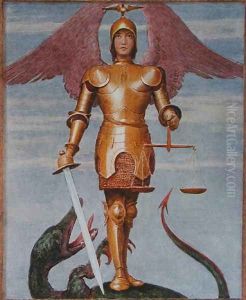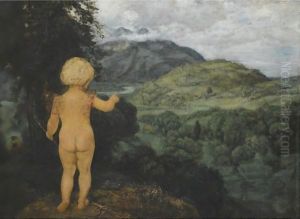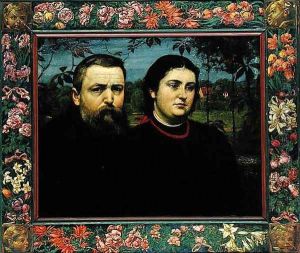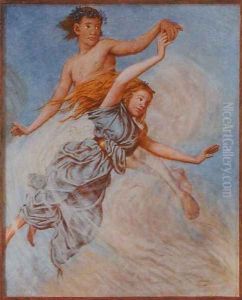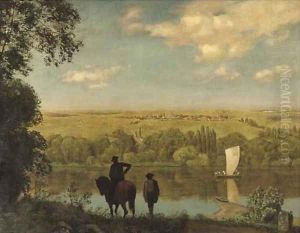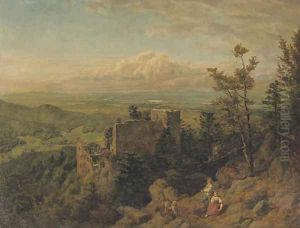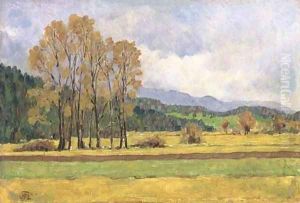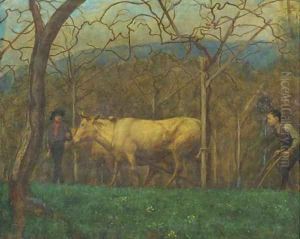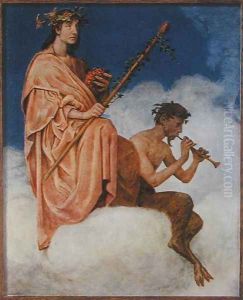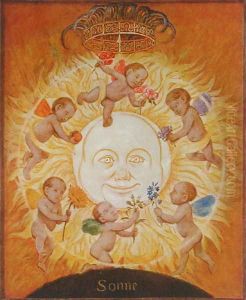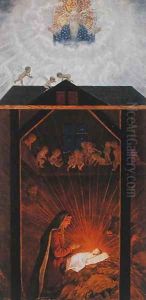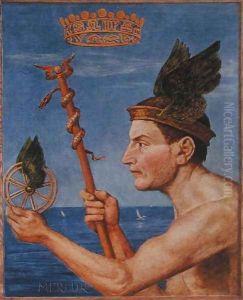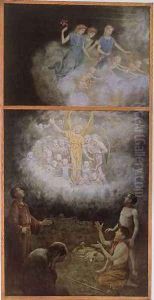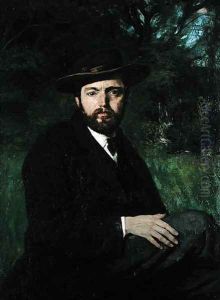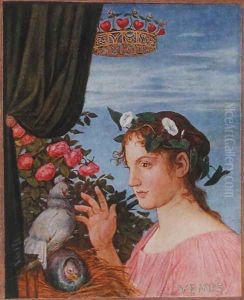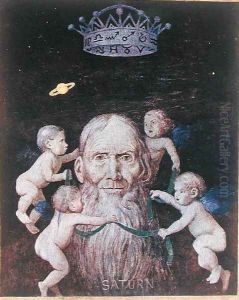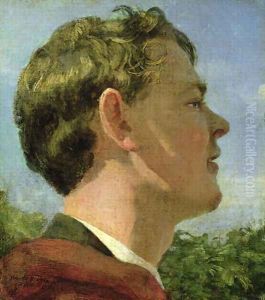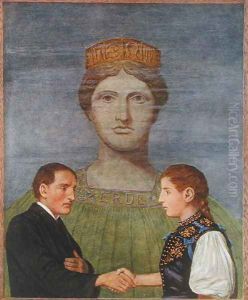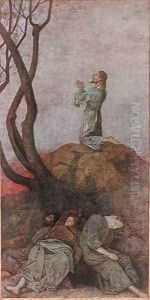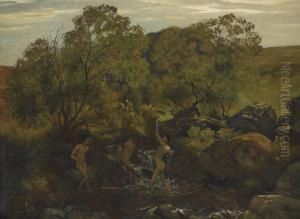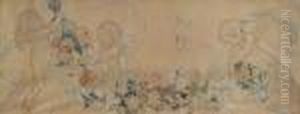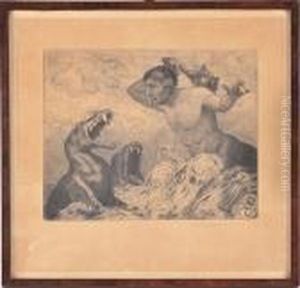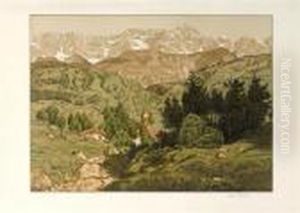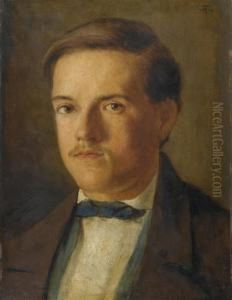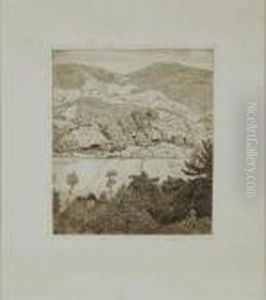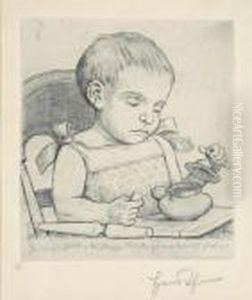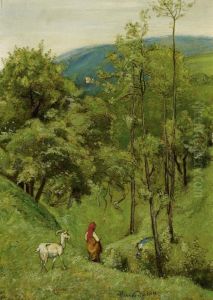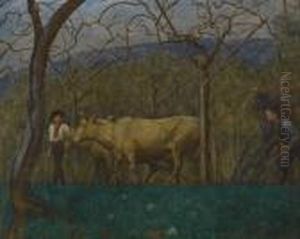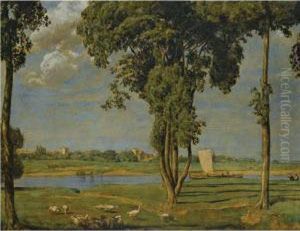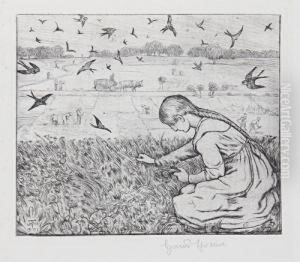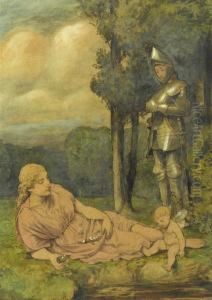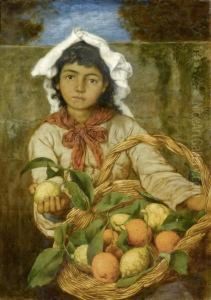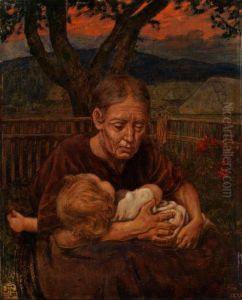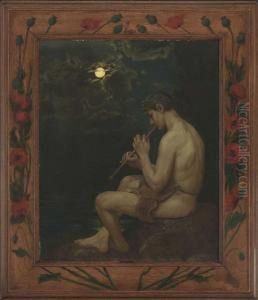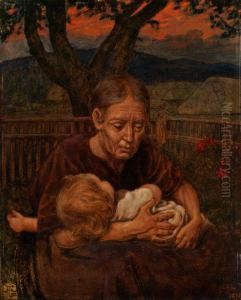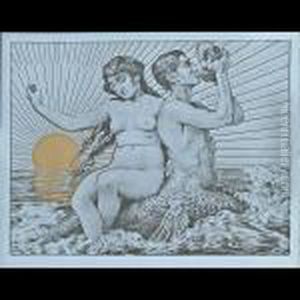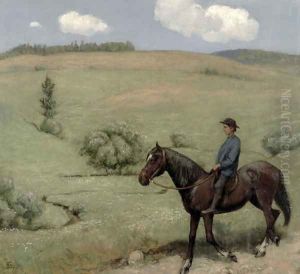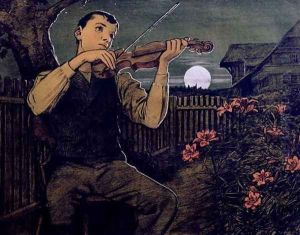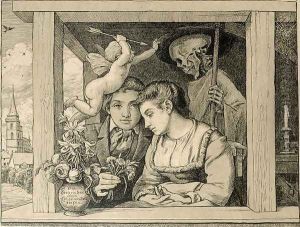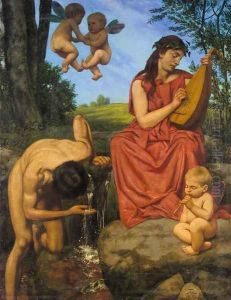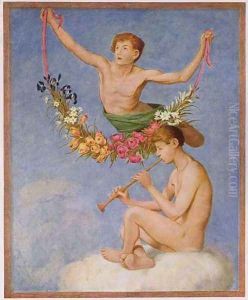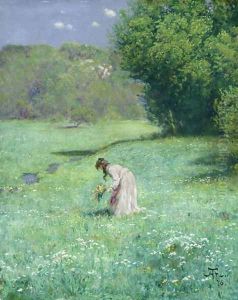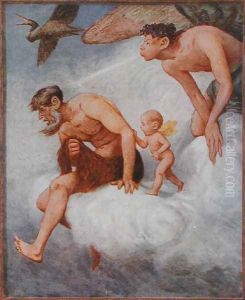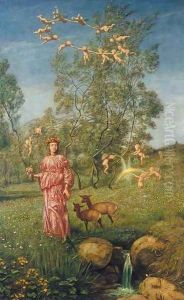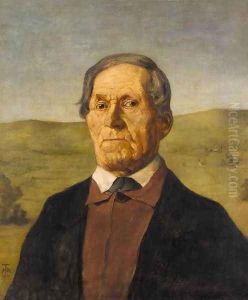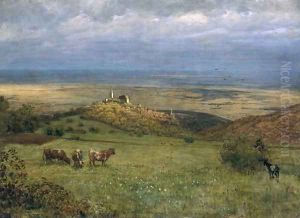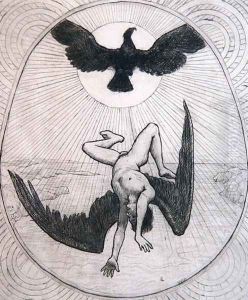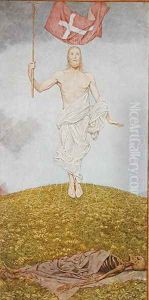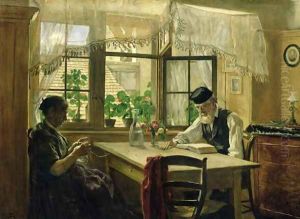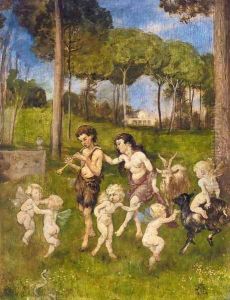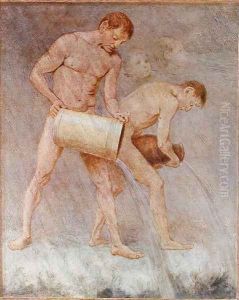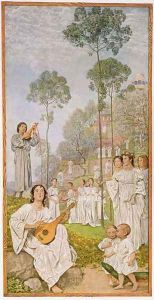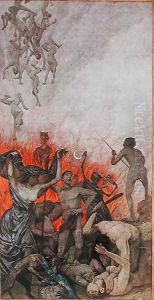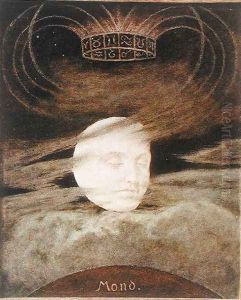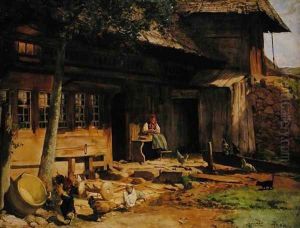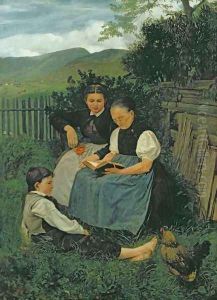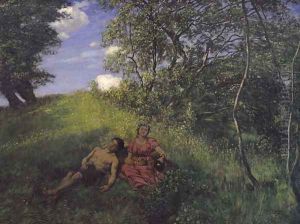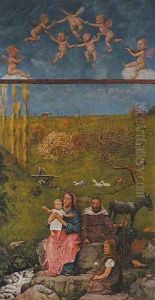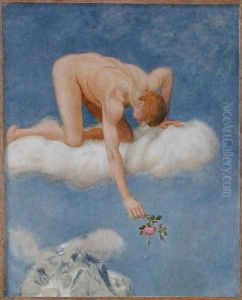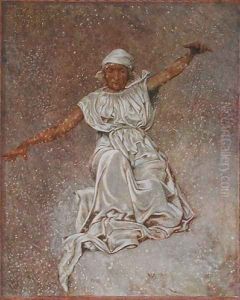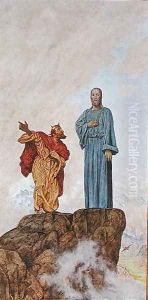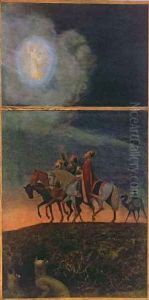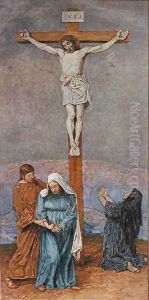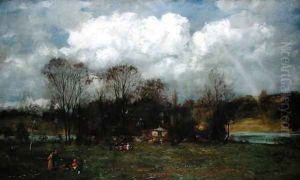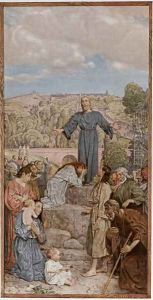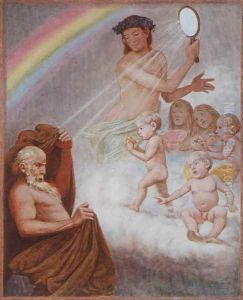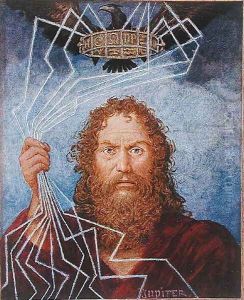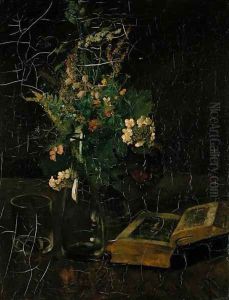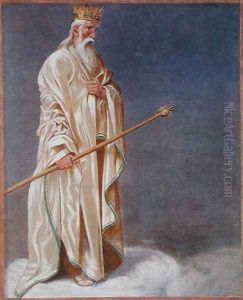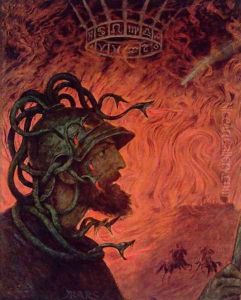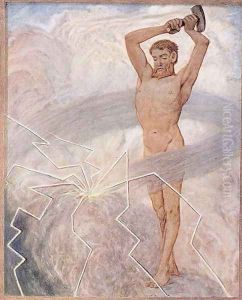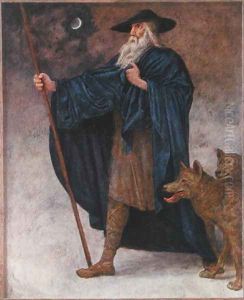Hans Thoma Paintings
Hans Thoma was a German painter, born on October 2, 1839, in Bernau in the Black Forest, Germany. Often regarded as one of the most individual German artists of the late 19th century, Thoma's work is characterized by a simple, rustic charm and a deep affection for the landscapes of his youth.
His early life was marked by modest circumstances, and he initially began an apprenticeship as a watchmaker. However, his passion for art ultimately led him to pursue a career in painting. He studied at the Karlsruhe School of Art under the tutelage of Johann Wilhelm Schirmer, who was a significant influence on his early work. Schirmer was a landscape painter, and Thoma quickly adopted a similar focus, honing his skills and developing his unique style.
Thoma’s artistic career saw a slow start, and he struggled to gain recognition. His fortunes changed when he met Gustave Schönleber, who became his friend and mentor. Schönleber introduced Thoma to the circle of artists around the patron Baron von Reitzenstein, which led to patronage and commissions that helped establish his career.
Throughout his career, Thoma remained deeply attached to the imagery of the Black Forest, and he often depicted the landscape, folklore, and peasant life of his native region. His paintings frequently featured idyllic scenes, blending realism with elements of symbolism and allegory. Thoma's work was also marked by the use of bold colors and a distinctive linear style.
While Thoma did enjoy some contemporary success, especially later in his life, he was often at odds with the prevailing artistic trends of his time, such as Impressionism and the avant-garde movements. Instead, he followed a more traditional path, drawing inspiration from the Old Masters and German Romantic painters.
In addition to his landscape paintings, Thoma also produced a number of portraits, self-portraits, and mythological scenes. He had a particular interest in themes of life, death, and eternity, which were reflected in some of his more introspective works.
Thoma's legacy is preserved through his significant contributions to German art, and his works are held in numerous collections and museums, including the Hans Thoma Museum in his hometown of Bernau. He passed away on November 7, 1924, in Karlsruhe, Germany, leaving behind a body of work that continues to be appreciated for its lyrical simplicity and depth of feeling.
